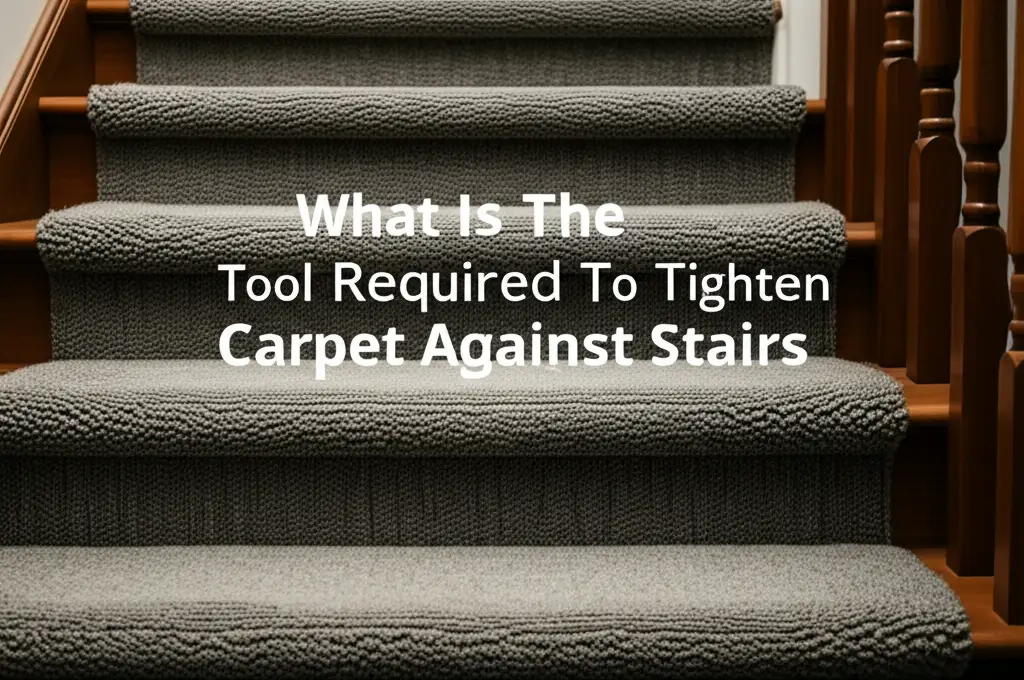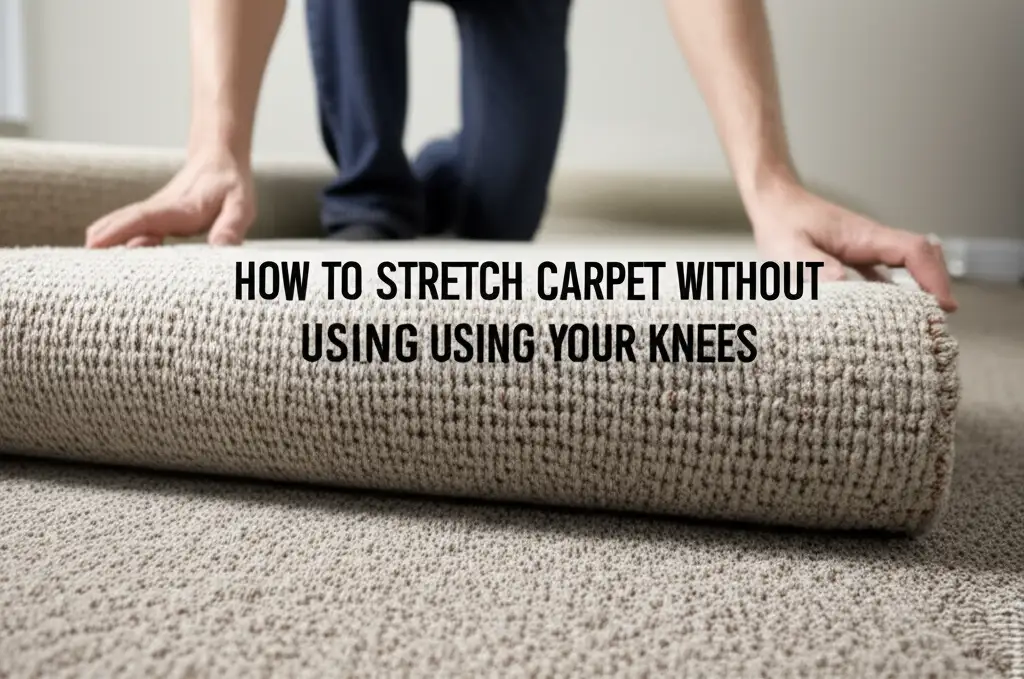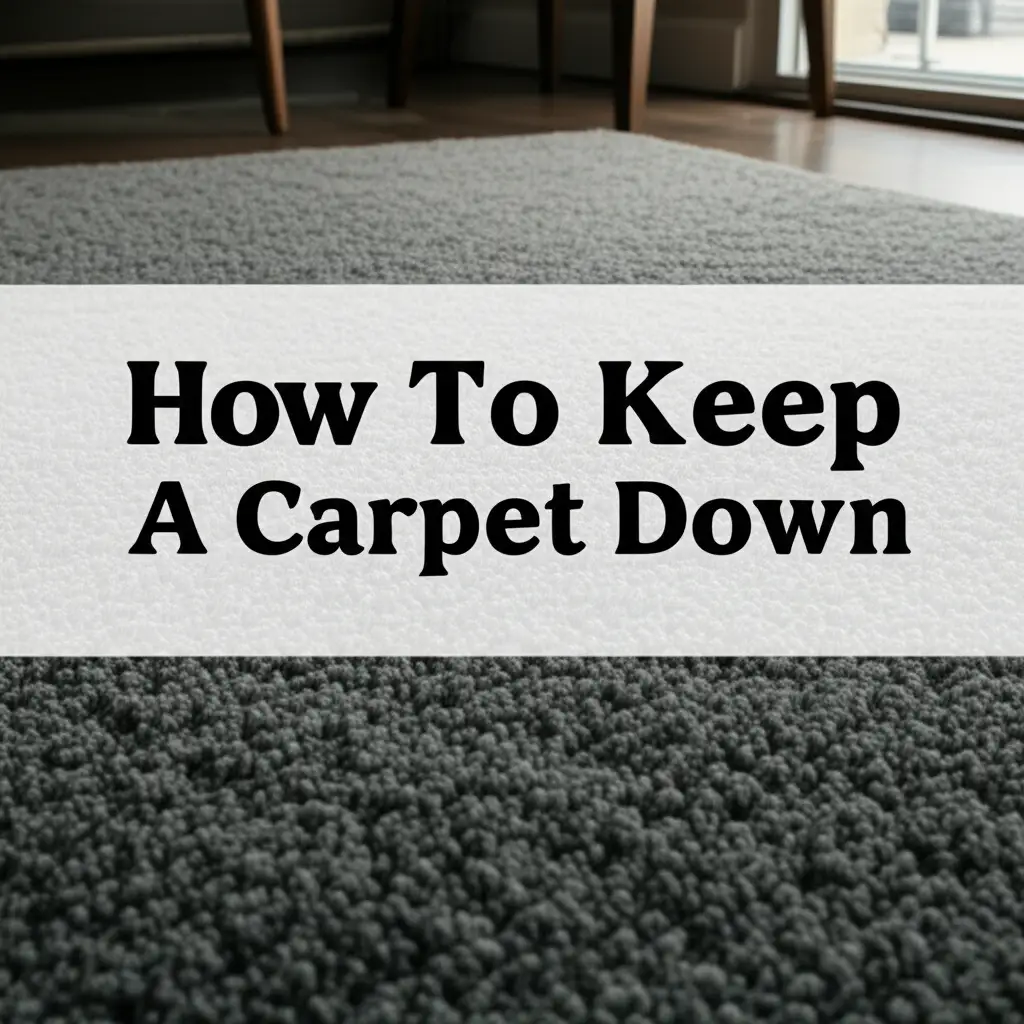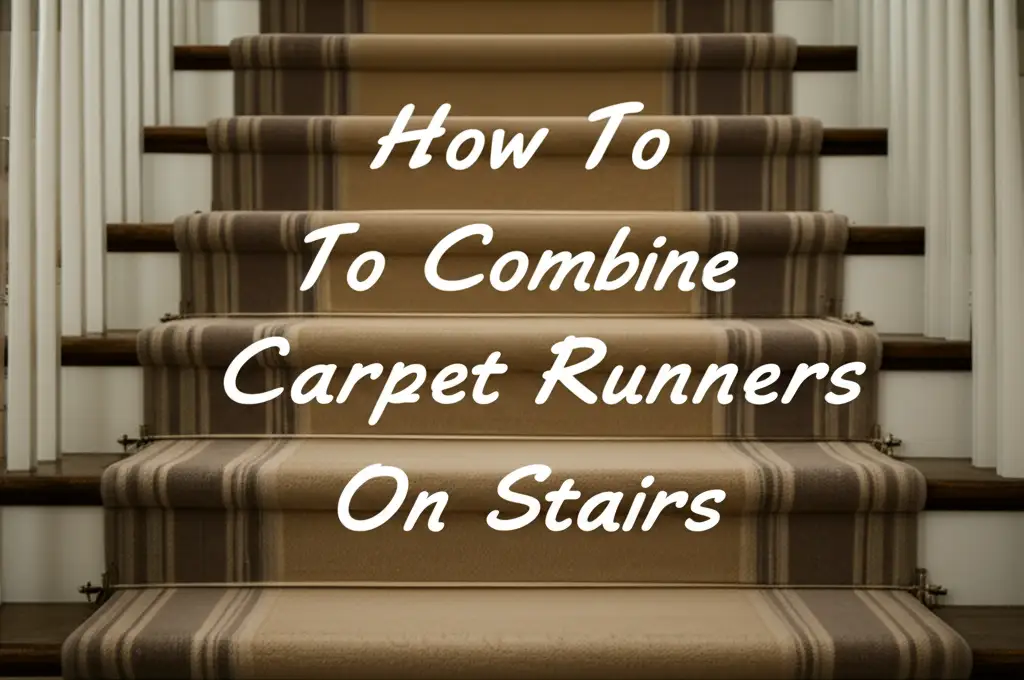· Elira Thomsen · Home Improvement · 12 min read
What Is The Tool Required To Tighten Carpet Against Stairs

The Essential Tool to Tighten Carpet on Stairs
Loose carpet on stairs presents a safety hazard. It creates an uneven surface. People can trip and fall. Beyond safety, loose carpet looks bad. It also wears out faster. I often see homes where stair carpet ripples. This common issue needs a specific solution. We need the right tool to fix this. This article will explain what tool you need. It also shows you how to use it. You will learn about other tools too. We discuss preparation and maintenance. I want you to have safe, beautiful stairs.
Takeaway
- The primary tool for tightening carpet against stairs is the carpet knee kicker.
- This tool helps stretch carpet onto tack strips.
- A power stretcher offers more leverage for larger areas.
- Proper preparation of stairs is essential for good carpet installation.
- Regular maintenance helps keep stair carpet tight.
The main tool required to tighten carpet against stairs is a carpet knee kicker. This specialized tool allows you to stretch the carpet and firmly attach it to tack strips along the stair treads and risers. It uses leverage and impact to remove slack, ensuring a smooth, secure, and safe carpet surface on your staircase.
Understanding Why Stair Carpet Needs Tightening
Stair carpet endures heavy foot traffic. Each step applies pressure. This pressure causes the carpet to shift. Over time, carpet fibers stretch. The backing also stretches. This leads to loose areas. You see ripples or bumps. These areas are not just unsightly. They are dangerous. A person can catch their foot on a loose spot. This causes falls. Falls on stairs can cause serious injury.
Regular wear and tear contributes to this problem. Pets running up and down can loosen carpet. Children playing on the stairs also contribute. Even changes in humidity can affect carpet tightness. High humidity can make carpet fibers swell. Low humidity can make them contract. This cycle contributes to the carpet becoming slack. It is important to address loose carpet quickly. Prompt action prevents further damage. It also keeps your home safe.
Ignoring loose carpet leads to bigger issues. The carpet wears unevenly. Bare spots appear in high-traffic areas. The padding underneath can also break down. This means you need a full carpet replacement sooner. Investing in the right tool saves you money. It extends the life of your carpet. It also maintains a tidy look in your home. Taking care of your stair carpet is a smart choice for safety and aesthetics.
Introducing the Primary Tool: The Carpet Knee Kicker
The carpet knee kicker is the star of our discussion. This tool is essential for tightening carpet. It has a padded end. This end you lean into with your knee. The other end has a series of sharp teeth. These teeth grip the carpet. You push the carpet forward with your knee. This action stretches the carpet. You then secure it onto tack strips. The tack strips hold the carpet firmly.
Using a knee kicker is straightforward. You position the teeth a few inches from the wall or stair nose. Then you use your knee to push. The tool’s design gives you leverage. This leverage helps you stretch the carpet. It makes the carpet taut. This tight fit prevents ripples. It stops the carpet from shifting. The knee kicker helps achieve a professional finish. It ensures the carpet lays flat. This makes stairs safe to use.
A knee kicker is a handheld tool. It is lightweight. This makes it easy to maneuver. You can use it in tight spaces. Stairs have many tight corners. The knee kicker excels here. It is ideal for small areas. It also works well for finishing touches. Carpet professionals use this tool daily. They rely on its effectiveness. For any homeowner tackling stair carpet, a knee kicker is a must-have. It is an investment in your home’s safety and appearance.
The Power Stretcher: A Professional’s Secret Weapon
While the knee kicker is crucial, a power stretcher offers more force. This tool provides mechanical leverage. It uses a long pole and a head. The head grips the carpet. A tensioning mechanism stretches the carpet. You press a lever to engage it. The power stretcher creates strong tension. This tension pulls the carpet very tight. It secures large areas effectively.
Power stretchers are common in professional settings. Installers use them for full room installations. They also use them on long hallways. Stairs can sometimes benefit from a power stretcher. This happens if the carpet is very loose. It helps create maximum tension. The power stretcher reduces physical strain. It also speeds up the installation process. You get a very tight result.
Using a power stretcher on stairs requires skill. It is a bigger tool. It might be harder to maneuver in tight stairwells. You typically use it on the long stretches. You then use the knee kicker for details. The power stretcher provides a superior stretch. It minimizes future loosening. It creates a flatter, more durable finish. If you want the absolute best results for a full stair carpet overhaul, consider a power stretcher. It complements the knee kicker. It helps fix issues like those found when you need to fix carpet in doorway situations.
Preparing Your Stairs for Carpet Installation
Proper preparation sets the stage for success. Before tightening carpet, inspect your stairs. Remove any old carpet or padding. Clean the stairs thoroughly. Dust and debris affect adhesion. Nail down any loose boards. Loose boards create an unstable base. They can cause squeaks. They also make carpet difficult to secure. A solid subfloor is important.
Next, install tack strips. Tack strips have sharp pins. These pins grip the carpet backing. Place tack strips along the back of each tread. Place them close to the riser. You also place them at the top edge of each riser. Leave a small gap from the wall. This gap allows the carpet to be tucked. The pins face away from the riser. This ensures they grab the carpet. Secure the tack strips with small nails.
Padding is the next step. Carpet padding adds comfort. It also extends carpet life. It acts as a cushion. Cut the padding to fit each tread and riser. Secure it with a stapler. Staple the padding around the edges. Do not staple through the tack strips. This setup creates a good foundation. It makes the carpet feel softer. It helps the carpet lay smoothly. This preparation ensures your carpet will remain tight. It prepares the surface for a long-lasting installation. Proper preparation also helps to cover ugly carpet on stairs efficiently.
Essential Preparation Steps:
- Remove old materials: Take off all old carpet and padding.
- Clean the surface: Sweep and vacuum all dust and debris.
- Repair subfloor: Secure any loose or damaged wood.
- Install tack strips: Place strips on treads and risers, pins facing out.
- Add carpet padding: Cut and staple padding to fit treads and risers.
Step-by-Step Guide: Using the Knee Kicker on Stairs
Using a knee kicker effectively takes practice. First, position the carpet. Make sure it roughly covers the area. Start at the top of the stairs. Or, you can start from the bottom if it makes sense for your layout. Begin with the first step. You work one step at a time. This ensures accuracy.
Place the knee kicker head onto the carpet. Position the teeth about two to three inches from the tack strip. The teeth should point towards the strip. Brace yourself. Then, with a quick, firm motion, push your knee into the padded end. This action stretches the carpet. The carpet moves towards the tack strip. The carpet’s backing catches on the pins.
Once stretched, use a stair tool. A stair tool is a chisel-like tool. It helps tuck the carpet. Tuck the carpet tightly into the crevice. This is where the tack strip is located. Use a rubber mallet to tap the tool. This secures the carpet onto the pins. Work across the width of the step. Stretch and tuck small sections. Repeat this process for each stair. Move methodically down the staircase. This method ensures each section is tight. It makes the entire staircase secure. You will achieve a professional-looking finish. This systematic approach ensures no loose spots remain. This process helps your carpet maintain its integrity.
Beyond the Kicker: Additional Tools for Carpet Installation
While the knee kicker is central, other tools support the process. Each tool plays a specific role. They help achieve a perfect finish.
- Stair Tool: This tool has a blunt, flattened end. You use it to tuck carpet. It pushes carpet into tight corners. It also tucks it behind tack strips. It helps create crisp, clean lines.
- Carpet Trimmer/Knife: A sharp carpet knife is essential. You use it to cut excess carpet. Make precise cuts along walls and edges. Always use a fresh blade. A dull blade can fray carpet.
- Seam Roller: If your carpet requires seams, a seam roller is vital. It presses seams flat. It helps adhesive bond properly. This makes seams less visible.
- Staple Gun: An industrial-grade staple gun secures padding. It also helps fasten carpet temporarily. It works well on risers. Ensure staples are long enough to hold.
- Measuring Tape: Accurate measurements prevent waste. Measure stairs precisely. This ensures you cut the right size pieces.
- Chalk Line: Use a chalk line for straight cutting guides. It marks where to cut. This helps maintain squareness.
Using the right set of tools makes a difference. It makes the job easier. It also yields better results. Each tool contributes to a professional installation. These tools help create a durable stair carpet. They ensure the carpet stays tight for years. Understanding each tool’s function makes you more efficient. It also helps prevent mistakes. This knowledge is useful for any homeowner.
Maintaining Your Stair Carpet’s Tightness
Installation is just the first step. Keeping your stair carpet tight needs ongoing care. Regular vacuuming helps. It removes dirt and grit. This abrasive material can wear down fibers. It also prevents the carpet from settling too much. Use a vacuum with strong suction. This helps lift carpet piles.
Address spills and stains immediately. Spills can weaken carpet backing. They also attract more dirt. Clean spots promptly with appropriate cleaners. Avoid harsh chemicals. Harsh chemicals can damage carpet fibers. They can also affect the backing. This damage can contribute to loosening.
Consider professional cleaning periodically. Professional cleaners use specialized equipment. They deep clean the carpet. This removes embedded dirt. It also revitalizes the fibers. This cleaning can help maintain carpet resilience. Resilient carpet is less likely to flatten. It holds its shape better.
If your carpet starts to loosen again, restretching is an option. You can use your knee kicker for this. Target the loose areas. Re-stretch them and re-tuck them. This process can add years to your carpet’s life. It keeps your stairs safe. It also keeps them looking their best. Regular checks and maintenance prevent major issues. Taking these steps protects your investment.
Tips for Longevity:
- Vacuum Regularly: Remove dirt and debris.
- Clean Spills Promptly: Prevent stains and weakening.
- Professional Cleaning: Get deep cleaning periodically.
- Spot Re-Stretching: Address loose areas quickly.
- Use Stair Protectors: Consider clear runners on high-traffic spots.
Frequently Asked Questions
Is it hard to stretch carpet on stairs?
Stretching carpet on stairs requires some effort. It needs patience and specific tools. Using a knee kicker correctly takes practice. The angles of stairs add complexity. Many homeowners can do it. It helps to watch tutorials first. Start with simpler tasks if you are new to DIY.
How often should carpet on stairs be stretched?
The frequency depends on usage. High-traffic stairs may need stretching every few years. Low-traffic stairs might last much longer. Look for visible ripples or slack. If you see them, consider stretching. Regular inspection helps determine when it is needed.
Can I stretch carpet without special tools?
Stretching carpet effectively without special tools is very difficult. You cannot achieve the necessary tension. Improvised methods often fail. They can also damage the carpet. Special tools like a knee kicker are designed for this task. They ensure a professional and lasting stretch. Using the correct tools saves time and effort.
What causes carpet to become loose on stairs?
Several factors cause carpet to loosen. Heavy foot traffic is a main cause. It stretches carpet fibers and backing. Improper installation also leads to loosening. If the carpet was not stretched enough initially, it will loosen faster. Humidity changes can also affect carpet tightness over time.
What is the difference between a knee kicker and a power stretcher?
A knee kicker is a smaller, manual tool. You use your knee to push and stretch carpet. It is good for small areas and finishing. A power stretcher is a larger, mechanical tool. It provides more leverage. It is better for large rooms. It offers superior stretching force. Both are used by professionals.
What are tack strips for in carpet installation?
Tack strips are thin pieces of wood or plastic. They have sharp nails or pins sticking up. Installers place them around the perimeter of a room or stair steps. The carpet backing catches onto these pins. This holds the carpet firmly in place. Tack strips are essential for a secure, stretched carpet installation.
Conclusion
Tightening carpet against stairs is an important task. It ensures safety and improves appearance. The carpet knee kicker stands as the primary tool. It provides the necessary leverage. This tool helps you stretch carpet effectively. For larger areas or professional results, a power stretcher offers more force. Both tools play a role in a proper carpet installation.
Remember, preparation is key. A clean, stable subfloor and properly installed tack strips create the foundation. Using additional tools like a stair tool or carpet trimmer ensures a perfect finish. Maintaining your stair carpet also extends its life. Regular cleaning and prompt attention to loose spots keep it looking great. Taking these steps makes your home safer. It also keeps your stairs beautiful for years. You can achieve professional-looking results yourself.





